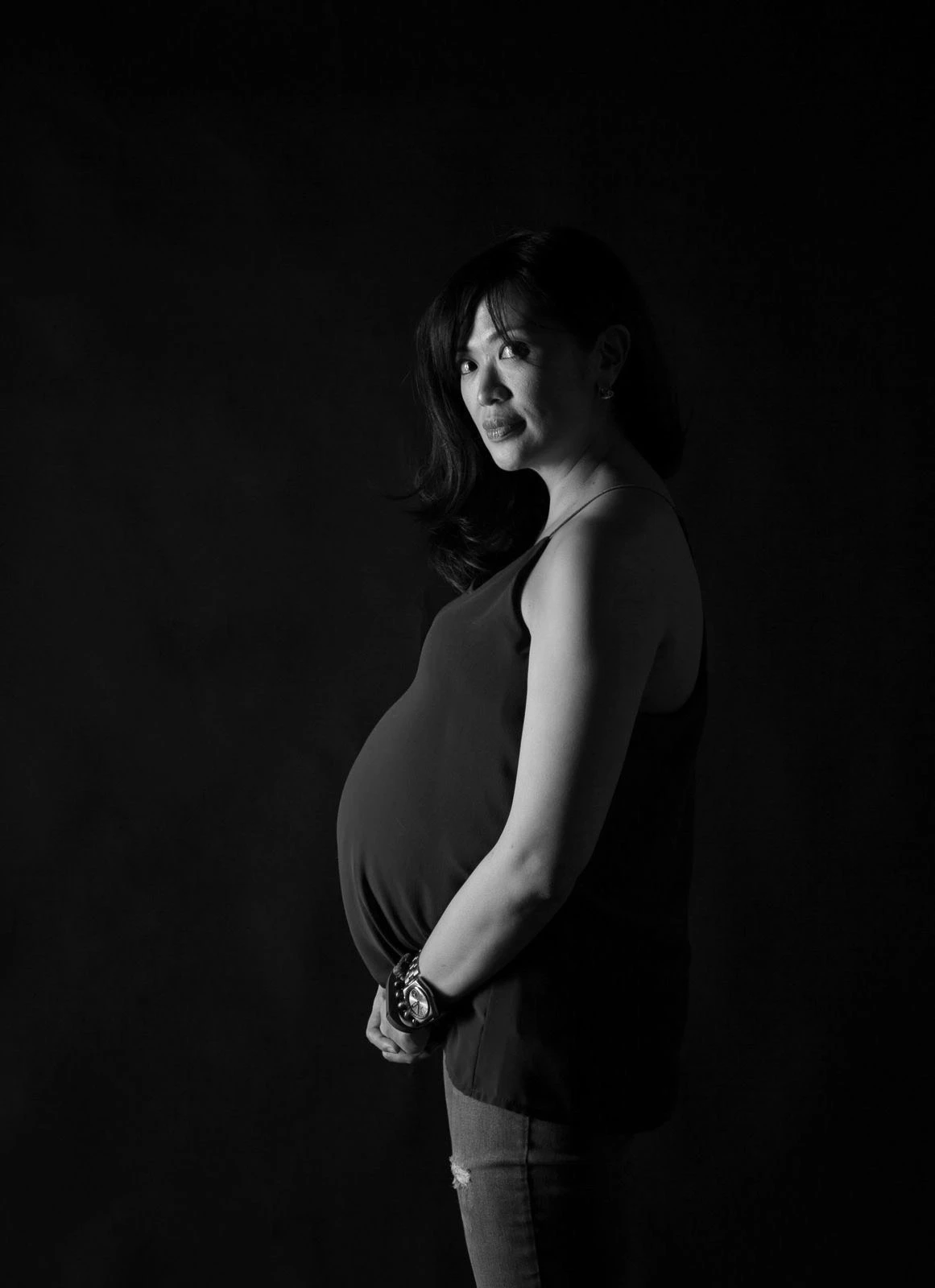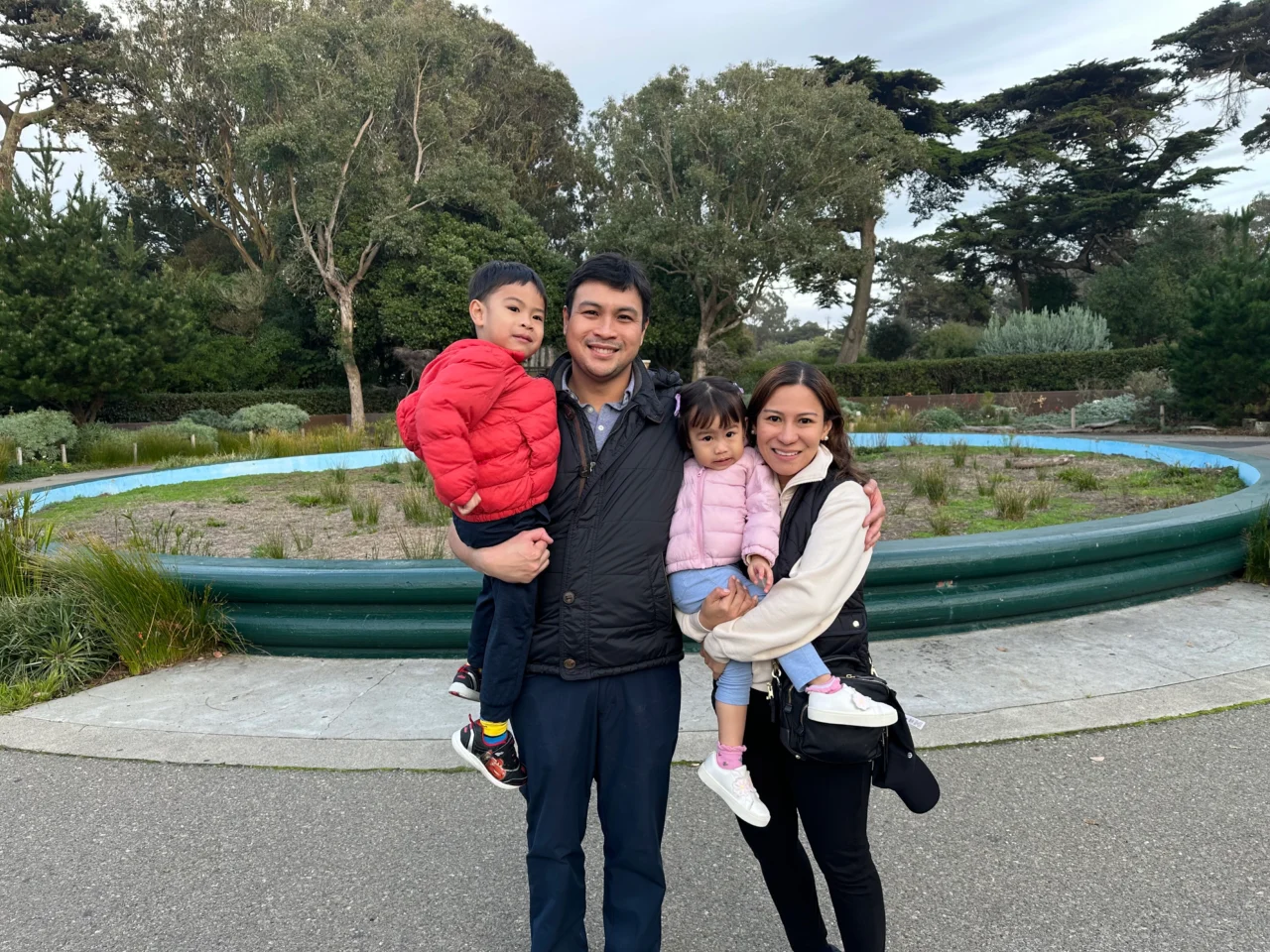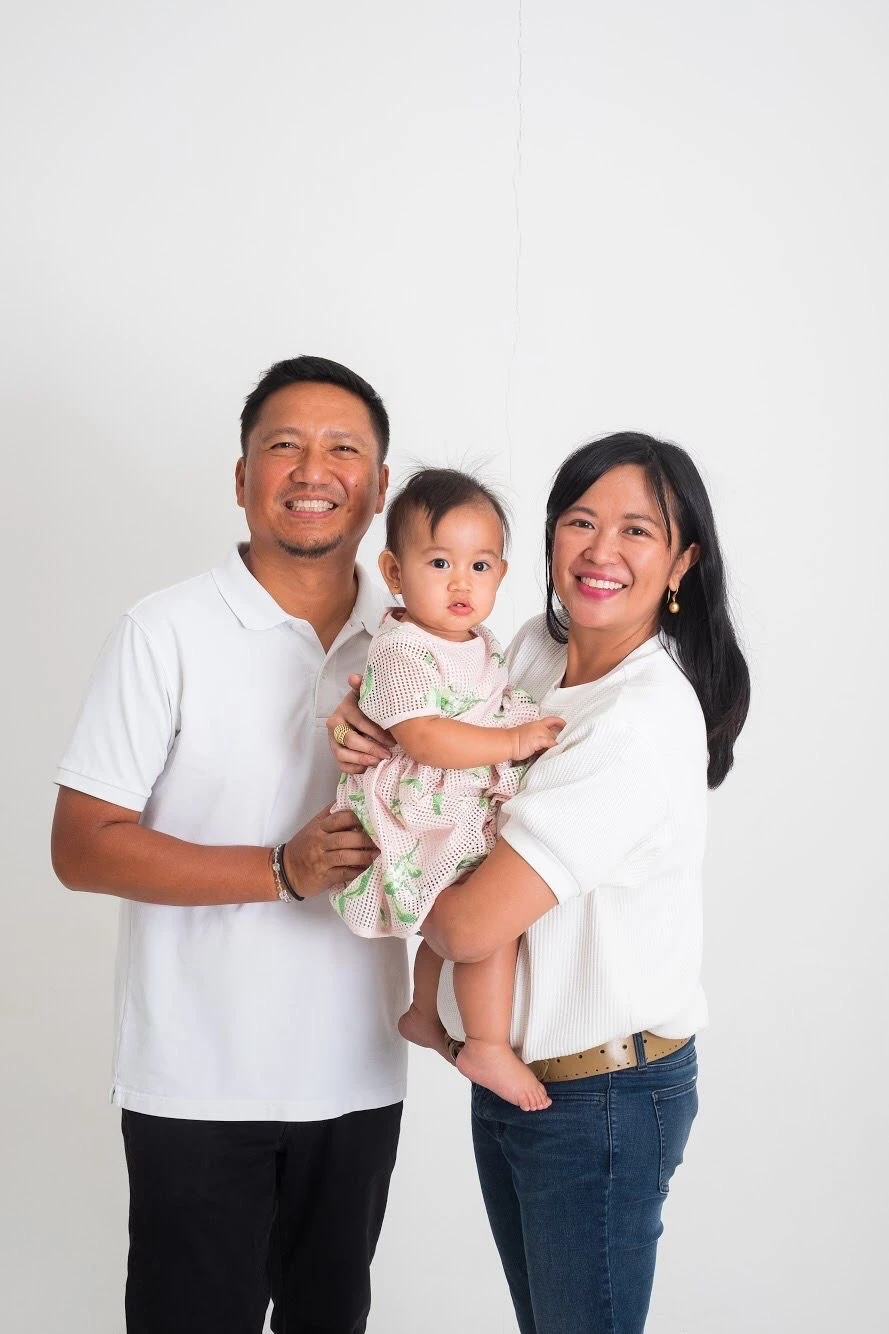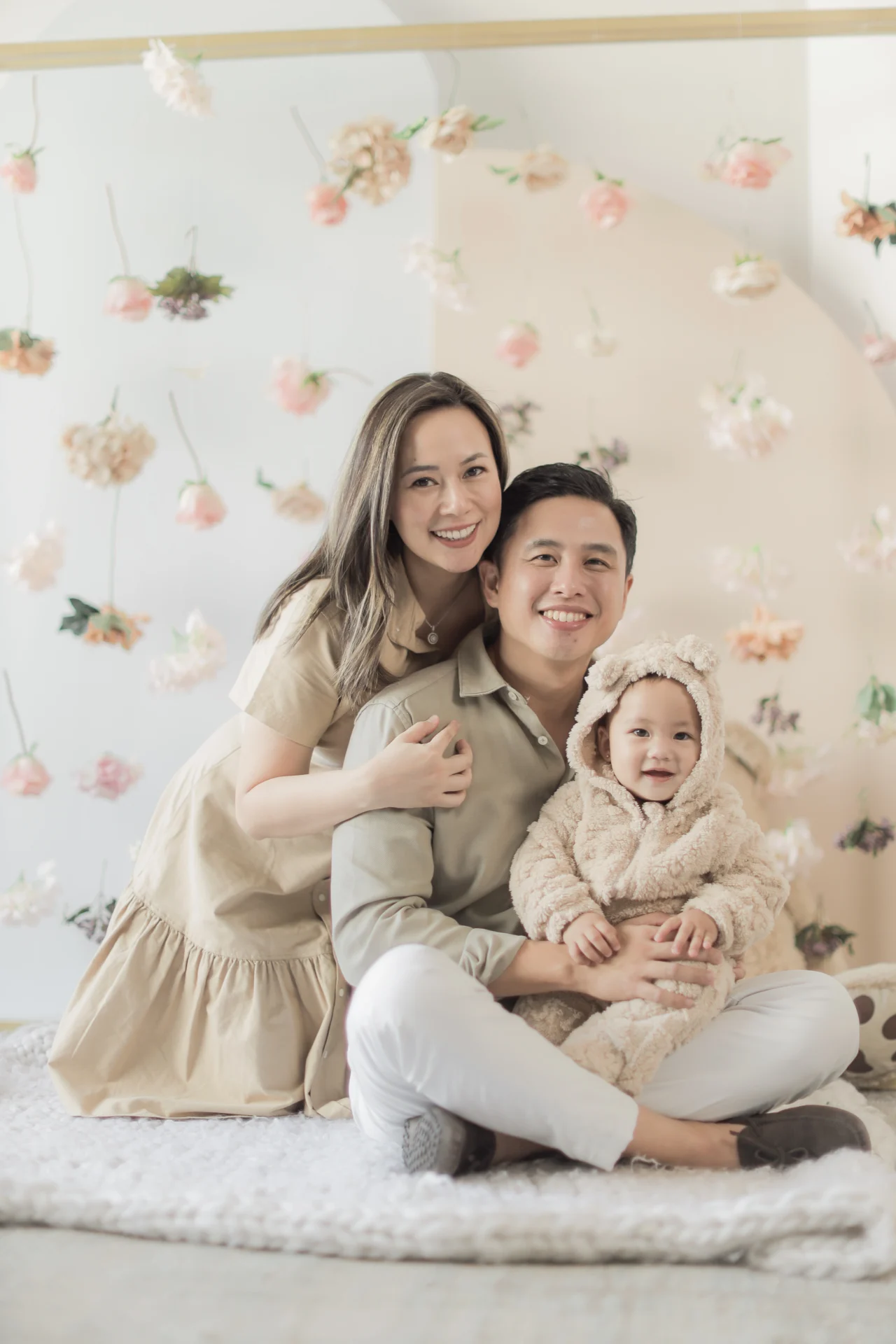How I Became “Mom”
These women chose hope over despair in their arduous journey to motherhood. Every second Sunday of May, they get to celebrate being called the most beautiful name in the world: “Mom.”
“It was pissing me off that my body was betraying me. ‘You are not following my orders!’ I felt insulted by my own body. And I think in general, a lot of women probably feel that way. ‘What’s wrong with me?’”
Angela Dinglasan, 47, wanted to get pregnant for 10 years, starting at 29, and recalls having tried “anything,” from vitamins to acupuncture. “I’m sitting there in a clinic in Binondo with needles all over myself. It’s this weird feeling of desperation.” She admits that this helplessness comes with shame: “It’s the one thing women can do that no one can, and why can’t I do it?”
Madeleine Velayo Uy, MD, 38, who admits she and her husband lost hope after their fourth IVF attempt, shares this frustration: “[It’s] really heartbreaking. Why not us? Everybody’s getting pregnant. Don’t we deserve this?” Her baby no longer had a heartbeat after nine weeks in her womb.
Judith Cantada, 41, had not one, but two miscarriages during the same pregnancy. “It turned out I had a rare condition called a heterotopic pregnancy, where one embryo is in the uterus and the other is in the fallopian tube,” she explains. “I carried a lot of guilt, feeling like I had somehow failed to make this journey easier for both myself and my husband. One moment we were celebrating the joy of being pregnant, and the next we were hit with heartbreak, shock, and loss—all within a matter of weeks.”
These women have bravely come forward with their stories, knowing that there are others like them who may need to read this to go on. But that’s what they all did, unceasingly despite the grief and the unbeatable odds.
They eventually got their little miracles: Dinglasan at 39, Dr. Uy at 37, and Cantada at 35.
Time is not on our side
A woman is classified as infertile if she’s been trying to conceive without contraception for a year. If she is above 35 years old, she’d be classified as infertile after six months of trying. Infertility may be brought about by genetics, lifestyle, or comorbidities like polycystic ovarian syndrome (PCOS) and endometriosis.
“If you have those [conditions] and you’re not conceiving in six months, you can already be classified as infertile,” says Gia Pastorfide, MD, an OB-GYN who is a fellow of the Philippine Obstetrical and Gynecological Society, the Philippine Society for Reproductive Medicine, and the Philippine Society for Gynecologic Endoscopy. “Of course, don’t forget the male. If they have a history of low sperm count, they’d be classified as infertile after six months of not conceiving.”
Dinglasan, who has PCOS, admits she should have taken the more aggressive approach of IVF first versus doing three rounds of artificial insemination.
“I wish I had a doctor who had told me, you know, given that you have PCOS, maybe you should freeze your eggs. I didn’t think about it until later. So now when I meet younger people, I tell them to freeze their eggs. When they tell me, ‘I don’t know if I want to have a baby,’ I tell them, ‘It doesn’t matter!’ You [may be] 22 now [and] you’re not thinking about it, [but] believe me, the pain and the time and the effort and the struggle—it’d be so much better if you had frozen them when you were at your prime and very healthy.”
Sarah*, 40, knew she wanted to have kids and froze her eggs at 33 for “peace of mind.” She explains, “I still had not found the man I wanted to create a life with [and] I was leaving Manila to study abroad. I thought that I would feel freer to pursue my interests knowing that I already did the best I could to have a child.”
She underwent the procedure at the Kato Repo Biotech Center in Makati City—once at age 33 and again at 39. “[It took] roughly 14 days from the second day of cycle to harvesting which is roughly during ovulation. In between, hormones are administered orally and through injection to stimulate the ripening of the eggs.” Since this is a “back-up plan,” Sarah will be discarding the eggs should she conceive naturally in the future.
For those who are interested in freezing their eggs, the most cost-effective age to achieve up to a 73 percent success rate of a live birth is getting it done by 33, according to a 2022 study from the Journal of the American Society of Reproductive Medicine. “Egg freezing is just freezing the gametes (reproductive cells) of the woman so it’s unfertilized. When a patient is ready to get pregnant, you fertilize it with the sperm. Then you implant it in the body,” says Dr. Pastorfide.
She adds that it’s the age of the egg, not the uterus, that determines the success rate of the IVF. For instance, an embryo from an egg retrieved from a 30 year old has a higher survival rate than an egg from a 40 year old. Age also plays a key role in determining the success of IVF, which has a 50 to 60 percent success rate for a 35 year old. “It dwindles down to 4 percent when you’re 42,” says Dr. Pastorfide.
Dr. Pastorfide is also the medical director at Victory ART Laboratory in Makati City, one of the pioneers for IVF in the country, established in 2003. ART stands for “assisted reproductive technology,” which covers medical procedures used to address infertility, including egg freezing.
At Victory ART Laboratory, egg freezing starts at PHP 120,000 and IVF starts at PHP 150,000—but expect to spend more, since these are just baseline prices. To manage expectations, most people won’t have a successful pregnancy from the get-go. “A lot of people say, ‘my million peso baby.’ Maybe they’re taking into account that they had multiple IVFs.” says Dr. Pastorfide.
“One more round”
Dinglasan was no stranger to multiple IVF attempts and was well into her ninth year of trying when she ran into her friend in the hospital. “She goes, ‘Have you seen an immunologist?’” What Dinglasan discovered after taking a blood test ultimately gave her the answer she was looking for: “It turns out, my body was resistant to my husband’s blood. So, my body saw his blood as a parasite. Would you imagine such a thing?”
With the partnership and close monitoring of her OB-GYN and immunologist, Dinglasan was put on blood thinners and underwent a procedure called lymphocyte immunization therapy (LIT). “They take my husband’s blood, spin it out to get the white blood cells, and inject them into me. In short, to develop antibodies. Like a vaccine.”
After almost 10 years of trying and six months of LIT, Dinglasan and her husband agreed: “One more round of IVF. If it works, we gave our last shot our best shot.” But her period never came: As it turns out, she conceived naturally!

Courtesy of Angela Dinglasan
Dr. Uy became pregnant after six years of trying, which included artificial insemination, two miscarriages—one biochemical pregnancy and another at nine weeks—and five IVF procedures. In between cycles, she would have her eggs harvested and would freeze embryos for future use. “For the last harvest, I changed everything. I was on a gluten-free diet, probiotics, intermittent fasting. I was exercising and playing tennis. I quit alcohol. I was trying everything,” she says.
It was the fifth embryo transfer that resulted in a live birth—on Mother’s Day, no less!
It’s not over yet
After Cantada’s emergency surgery for her heterotopic pregnancy, she was put on medication that meant she and her husband had to wait six months before trying to get pregnant again. “It was tough, having to pause when all we wanted was to move forward. But once we got the green light, we didn’t waste any time—we went straight into IVF. Thankfully, we got pregnant after just one embryo and one cycle.”

Cantada with her husband Luis and kids. Courtesy of subject.
Although relieved, Cantada admits she never let her guard down. “I was incredibly cautious—I didn’t allow myself to truly celebrate or start preparing for the baby’s arrival until the eighth or even ninth month. In the back of my mind, there was always this fear that something could go wrong at any moment. It was hard to feel safe, even when things seemed to be going well.”
Dr. Uy, who currently practices aesthetic medicine at Dermanova Medical Aesthetics, quit her work before the 2023 embryo transfer. “I was so careful. I was at home, resting, praying. Staying healthy. I was scared of losing the baby again. I didn’t announce it, because it [could have been] heartbreaking again. But if people saw me pregnant, I would definitely confirm [it]. I just didn’t want to jinx anything by posting on social media. Other people found out about it when I posted after giving birth already.”
Dinglasan recalls the physical toll of continuing to be on blood thinners while pregnant: “’Di ba pregnancy is almost 10 months? Think about that: Let’s say 10 x 30, so 300 days of injecting blood thinners. Every day. I am not kidding when I say I ran out of skin [surface] area and [it] was black and blue!”
During the Allure Philippines interview, Dr. Uy shared an emotional recollection of her 2022 miscarriage, a reminder that healing after loss is never linear. Cantada agrees, saying, “It didn’t happen overnight. It was a slow, sometimes painful process of finding the strength to keep going—especially with an IVF journey. I also found healing in the quiet moments of self-care, in the small gestures of support from friends and family—especially my husband, and in the unexpected kindness of people who had been through similar struggles.”
And as for the unsolicited comments of well-meaning family, friends, and strangers, Dinglasan has this to say: “I’ll be frank—the more I told people, mas nakaka-nerbyos ’yung naka-abang [sa news]. Also, they mean well, but [we] don’t need [unsolicited comments]. And there’s another thing I’m gonna say—I really wish people would look more at the guy too. Why is it just me? It takes both. I feel like a good partner—and my partner did, but he couldn’t stop the comments of other people—I wish people would realize, it’s not all about the woman. They’re placing so much burden on us that the load feels very heavy, hindi pa nga naguumpisa.”
Dr. Pastorfide emphasizes the need for the male partner to also participate in consultations. “Until now I still have male patients who don’t want to be tested. If it’s infertility, it takes two to make a baby. It would be better if I talk to them at the same time, so both of them can understand the treatment, and they’re both on board with whatever will happen.”
When Dinglasan, 47, gave birth to her daughter at 39, she knew she wouldn’t try for a second child. “It’s not just the money but the effort, the energy, everything. I honestly will say I would have had two kids if I had gotten pregnant in my early 30s. But after I gave birth, oh my god, pagod na pagod na ako. I didn’t want to see another needle for a long time.” She adds, “It was a miracle to have one. I personally was satisfied. I felt at peace with that.”

Dinglasan with her husband Robbie and their daughter Noa. Courtesy of subject.
Now that I’m a mom
“My identity as a mother has evolved in ways I never expected through the journey of having a rainbow baby,” says Cantada, who now has two kids. “When our rainbow baby finally came, everything changed. Motherhood became not just a role, but a calling. My husband and I made the intentional decision for me to step away from my career so I could be fully present for our children—especially after everything we went through to get here. It’s not always easy, but it’s the most meaningful work I’ve ever done. Being a mother isn’t just something I wanted—it’s become a part of who I am.”
Dinglasan likens being mom to Noa to “the best and worst rollercoaster” she can be on. “I love my daughter to death. I will die for her. But you will always feel your heart is outside your body. My life is no longer mine. That’s the reality, and it will be the reality forever.”
On May 12, Dr. Uy’s daughter will turn 1. Someday, she will share this journey with her. “So she will know that she has been wanted ever since. We wanted to have her for a long time. ‘You are wanted. This is your story.’

Dr. Uy with her husband, Atty. Alden, and their daughter. Courtesy of subject.
*Name has been changed




